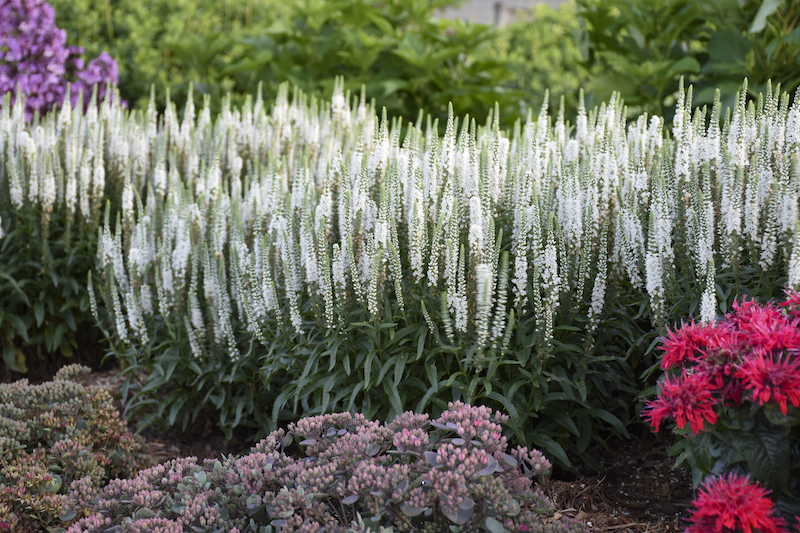Speedwell is a very hardy perennial that does not need much supplemental fertilizing to perform at its best. Mature plants do not demand much attention to thrive and live for many seasons. If your Speedwell is not blooming well or putting out smaller flower spikes than normal, you may consider adding fertilizer. Mulching with organic compost in the spring and summer will slowly release essential nutrients over the growing season. Using a slow-release, pre-mixed fertilizer once a year will also provide long-term nutrition, which is preferable to short-term quick feeds.

How to Fertilize Speedwell
Speedwell is not fussy about the soil pH and grows quite happily in any soil that is slightly acidic to slightly alkaline. Granular fertilizer needs to be applied to the soil around the plant early in the spring. Follow the manufacturer’s recommendation and make sure to lightly scratch in the fertilizer so that it will wash down deeper in the soil with each watering. Water the plants well and make sure to keep the fertilizer off foliage or plant crowns. Granular fertilizer can burn tender leaves or stems.
Best Time To Fertilize Speedwell
The best time of year for fertilizing is when new growth emerges in the spring. The plant will benefit from the nutrients as it is coming out of winter dormancy. A mulch of organic compost is also best applied in the spring before the heat of summer sets in. Applying fertilizer while a plant is dormant has minimal benefit. The plant is not actively growing, and the excess fertilizer will likely just wash away or build up in the soil over time.
Fertilizing later in the summer may interfere with the plant’s ability to prepare for dormancy. Instead of building up stronger roots for winter, the plant diverts energy to producing excess foliage and top growth, weakening the plant. All fertilizer applications should be stopped by August in most growing zones.

Best Fertilizer For Speedwell
Speedwell and other long-blooming perennials benefit from a slow-release fertilizer that has nutrients to support blooming and strong root development. The NPK ratio is listed on the product label and indicates the ratio of each macronutrient in relation to each other. N is nitrogen and supports mainly foliage growth. The P stands for phosphorus, which supports blooming and overall cell strength. The K indicates potassium level, which supports strong root development.
When buying pre-mixed formulations, look for one that has a higher ratio of P and K to N. Dr Earth or Espoma both have formulas specifically designed for roses and other blooming plants. A slow-release formulation ensures a steady amount of nutrients for the whole season with one application.
Speedwell Fertilizing Tips
- Fertilize only if the plants appear to be slowing down or blooming less
- Apply a slow-release, granular fertilizer early in the spring as growth emerges
- Avoid spilling fertilizer on the foliage or crown to prevent burning
- A formulation with higher P and K content will boost blooming and support strong root development without spurring excessive foliage growth.
Warnings
-Always wear protective gloves and a face mask when handling chemical fertilizers.
-Closely follow all directions and storage guidelines that are on the fertilizer label.
 |
Author Robbin Small - Published 7-22-2022 |
